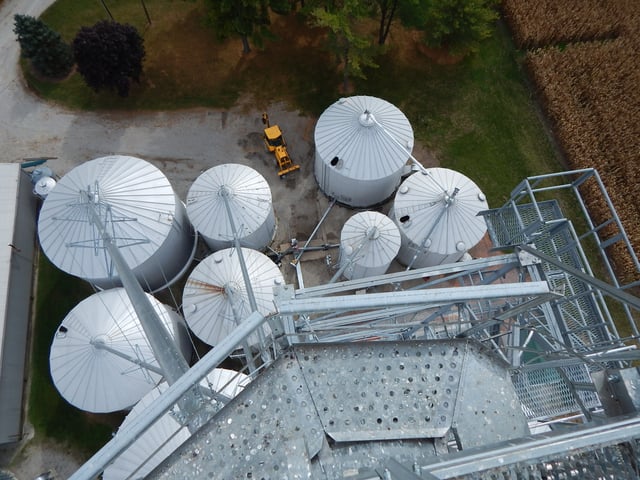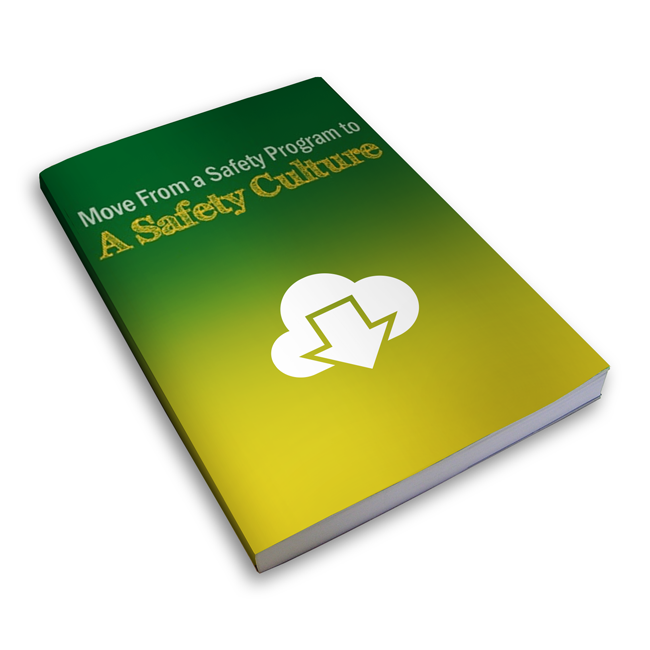Every year, falls from grain bins, silos, and grain dryers cause serious injuries and even fatalities. While less frequent than other kinds of falls in agriculture, the consequences of grain bin falls are usually more severe. Here are important things to be aware of when implementing grain bin safety.

Stay Hands Free
Always keep both hands free while you climb. Use a tool belt, carry a backpack, or use a bucket on a rope to keep your hands free to climb safely. Here’s a story from FARMTALK newspaper of a Missouri man who had lost his grip while carrying a voltage tester in one hand and fell off a grain bin. It happened in mid-September and he missed the whole harvest season with 12 weeks of rehabilitation. His fall could have been fatal.
Older Grain Bins
It's common for farms to have grain bins that were built up to 50 years ago. These bins will consistently be evaluated for structural integrity, and as long as they pass, they'll continue to be used for storage. But do we think about how safe they are? Ladders on older grain bins were not built to the standards that we have today. The maximum load on the ladder may be 250 pounds, rather than the 350 pounds of today's ladders, the rungs might be too close to the wall, or there's no roof ladder to get to the peak of the roof.
It's time to look over these older grain bins and consider structural modifications to make them safer. If you contact your bin supplier, they can supply a safety solution for your older bins. Some of these modifications could cost more than the bin is worth, and if that's the case, you'll need to decide what the price is for keeping yourself and others safe. No matter what, make sure everyone is very aware of the safety flaws with these older bins and don’t let anyone work around them by themselves.
Structural Alteration
Consider installing ladder cages or steps. It’s a growing trend to modify existing bins for safety, especially for the older farming generation who desire safer environments and work that's less physically demanding.
Keep Track
There are numerous reasons to climb a grain bin; opening the roof cover, setting the auger, moving spouts, maintenance, checking bin equipment, grain levels, grain quality, and more. Consider creating a spreadsheet of each of your bins, listing all the reasons there are to climb each bin throughout the year. You may also consider who is climbing the bins and project the life of the bin as well. Start to prioritize the bins that put people at risk and what modifications are necessary. Having a document with all the pertinent information may help you put into perspective the overall risk. Don’t wait for a fall accident to happen to take a hard look at bin safety.
Best Practices
Here are some best practices for each time you or your employees climb bins.
- Ladder inspection: Inspect ladders for damage and corrosion.
.png?width=320&name=Untitled%20design%20(4).png) Ensure the ladder is secure with no missing or loose bolts. Check ladder rungs for compromised strength such as dents, bends and corrosion. If one rung is damaged it’s a clear sign to inspect everything around it. Be observant while climbing and record notes of your observations. Start a file or report any needed repairs to your supervisor.
Ensure the ladder is secure with no missing or loose bolts. Check ladder rungs for compromised strength such as dents, bends and corrosion. If one rung is damaged it’s a clear sign to inspect everything around it. Be observant while climbing and record notes of your observations. Start a file or report any needed repairs to your supervisor. - 3 points of contact: Anytime a worker climbs something, ladders, combines, tractors, sprayers, or anything structural such as grain bins, there should be three points of contact.
- Go slow: Keep it slow and steady and don’t rush. Always face the ladder. Always keep the body inside the rails and avoid overreaching. Ensure climbers are in the right state of mind and focused only on the task at hand.
- Work shoes: Shoes should have a strong rubber-cleated, slip resistant soles to prevent slippage and foot fatigue when bin climbing. Shoes and the ladder should also be kept clean.
- Weather: Weather can really affect bin conditions. Rain, condensation, snow and ice reduce friction and grip for hands and feet. In these conditions, try to wait until ladder rungs are dry. In cold or very hot conditions, use gloves that are slip resistant and allow for good grip and dexterity. If you plan to spend a considerable amount of time on the bin itself, wear comfortable clothing suitable for the conditions. Be aware that wind can make conditions less comfortable than being on the ground. If you wear appropriate clothing, you’ll increase your odds of staying safe during the bin climbing task or project.
We see news stories like this one about grain bin falls far too often, especially since they're preventable. It’s never too late to begin the process of keeping workers safe. If you don’t already have an adequate fall protection system in place, make a change today. You wouldn’t ever see a window washer on an office building without full fall protection, so why don't we expect the same from agricultural workers when they're working at similar heights? It's time to make sure everyone Gets Home Safe.
(Also see blog: Climbing Grain Bins Safely)
Assessing your bin safety starts with recognizing the overall risk and developing a plan to keep your people safe. Don’t wait for a fall accident to happen to take a hard look at bin safety.



